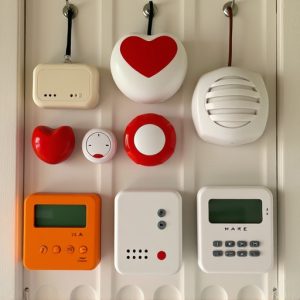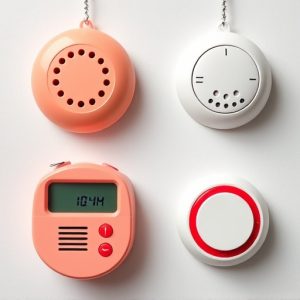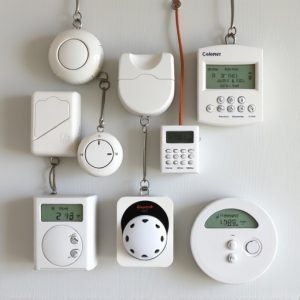Maximizing Nighttime Safety: Top Personal Alarms and Their Impact
Personal alarms, designed for late-night safety, rely on decibels (120-150 dB) for intensity, with r…….
Personal alarms, designed for late-night safety, rely on decibels (120-150 dB) for intensity, with ranges up to 400 feet. Strategic placement on the body or near sleep areas enhances effectiveness. Key factors in choosing an alarm include range, sound duration, weight, waterproof design, and battery life. Along with alarms, GPS trackers and self-defense sprays offer additional layers of security for comprehensive protection while navigating dark areas.
Staying safe during late-night outings is paramount. In this guide, we explore personal protection devices designed for your peace of mind. From understanding the power of decibels in personal alarm sounds to uncovering top devices and optimal placement strategies, you’ll learn how to maximize impact. We also delve into additional security measures to enhance your safety net. Discover how far personal alarms can truly go in protecting you when it matters most.
- Understanding Personal Alarm Sounds: Decibels and Effectiveness
- Top Personal Protection Devices for Late-Night Safety
- Placement and Use Cases: Maximizing the Impact of Your Alarm
- Additional Layers of Security: Complementing Your Personal Alarm
Understanding Personal Alarm Sounds: Decibels and Effectiveness
Personal alarm sounds are designed to startle and alert potential threats, but their effectiveness depends on several factors, with decibels being a crucial one. Decibels measure sound intensity, and personal alarms typically range from 120 to 150 decibels. This level of sound is considered loud enough to startle most people, but it’s essential to understand how far these sounds can travel and still be effective.
While 120 decibels might seem like a significant distance, the effect diminishes with proximity. Sounds this loud are often effective within a few meters, creating a temporary stun that can give you precious time to escape or summon help. However, factors like background noise, weather conditions, and terrain can significantly impact how far the alarm sound projects. Therefore, choosing a personal alarm with adjustable volume levels or one designed for maximum range can enhance your safety during late-night activities.
Top Personal Protection Devices for Late-Night Safety
In today’s world, ensuring safety while navigating late-night streets is paramount. Among the top personal protection devices are those that offer loud, piercing personal alarm sounds designed to deter potential threats and alert others to your distress. These alarms, often compact and easy to carry, can be easily activated with a simple press of a button, unleashing a high-decibel signal that can travel up to 400 feet (121 meters) or more, depending on the model. Some even incorporate stun features for added protection.
Choosing the right personal alarm means considering factors like range, duration of sound, weight, and ease of use. Waterproof designs are also beneficial for outdoor activities or unexpected downpours. Additionally, looking for a device with a long-lasting battery life ensures you’re prepared for extended periods when seeking safety. With these considerations in mind, users can select an effective personal alarm that provides peace of mind during late-night ventures.
Placement and Use Cases: Maximizing the Impact of Your Alarm
Maximizing the impact of your personal alarm involves strategic placement and understanding its use cases. For maximum range, position the device in a prominent location where it can be easily activated. This could be on your wrist, belt loop, or even within reach from your bed. The key is to ensure that it’s readily accessible and noticeable.
When considering use cases, personal alarms are ideal for late-night walks, returning home alone, or feeling unsafe in unfamiliar places. They can also serve as a loud deterrent when facing potential threats, making them powerful tools for personal protection. How far your personal alarm sounds will depend on its decibel level and environmental factors, but strategically placed, it can alert others nearby and disrupt potential incidents effectively.
Additional Layers of Security: Complementing Your Personal Alarm
In addition to a personal alarm, which can emit a loud and startling sound to deter potential assailants, there are several other layers of security devices that can enhance your late-night safety. These additional measures can provide a comprehensive approach to personal protection, ensuring peace of mind while navigating dark and secluded areas.
One such device is a personal GPS tracker, which allows you to share your location in real time with trusted contacts. This not only helps others keep track of your whereabouts but also serves as a backup plan if your alarm fails or you find yourself in an emergency situation. Additionally, carrying a self-defense spray can provide a non-lethal means of protection, allowing you to create distance between yourself and potential threats. Always remember that the range of a personal alarm, typically around 60-80 decibels, is sufficient to startle most attackers but may not be loud enough to alert neighbors or draw attention from far distances.
Personal alarms are powerful tools for ensuring your safety during late-night activities. Understanding the effectiveness of decibels and proper placement is key to maximizing their impact. With the right device and additional security measures, you can greatly enhance your personal protection, providing peace of mind in even the busiest urban environments. Remember, a loud and effective alarm sound can deter potential threats, making it an essential addition to your late-night safety routine.


